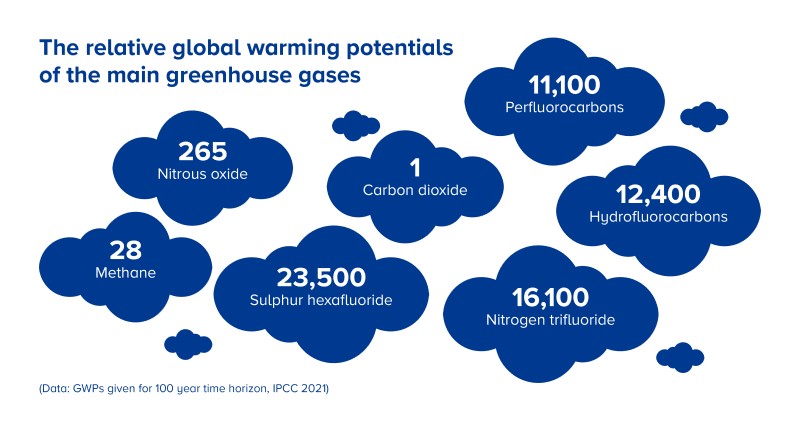Carbon dioxide equivalent (CO2e)
CO2e meaning
Carbon dioxide equivalents (CO2e) are a measure of the effect of different greenhouse gases (GHGs) on the climate. By converting different emissions to the equivalent amount of carbon dioxide (CO2), their impacts can be compared.
CO2 vs CO2e
Discussions about the necessity of emissions reduction often focus on carbon dioxide. This is because CO2 is the most common GHG emitted by human activities, in terms of the quantity released and the total impact on global warming. CO2 is released into the atmosphere as a result of various industrial processes, including agricultural land use and fossil fuel production, representing around 80% of the overall warming effect of current emissions worldwide.
However, measuring CO2 only accounts for one of many GHGs. Converting all emissions to CO2e includes the effects of the other main pollutants in the atmosphere.
Global warming potential
The Intergovernmental Panel on Climate Change (IPCC) quantifies the global warming potential (GWP) of the seven main greenhouse gases and groups of gases: carbon dioxide (CO2), methane (CH4), nitrous oxide (N2O), perfluorocarbons (PFCs), hydrofluorocarbons (HFCs), nitrogen trifluoride (NF3), and sulphur hexafluoride (SF6).
The GWP of every greenhouse gas is expressed relative to the global warming potential of CO2, which is set to 1. For example, the GWP of CH4 is 28, which means that the effect of CH4 emissions on global warming is 28 times higher than the same amount of CO2.

How are CO2e measured?
CO2e are quantified by multiplying the amount of the relevant GHG by its respective GWP. The resulting number shows the amount of carbon dioxide that would need to be emitted to have the same impact on the atmosphere.
CO2e are measured by mass. Depending on the application, they might be expressed in kilograms or tonnes.
What are CO2e used for?
CO2e are used in a range of contexts where comparison between GHGs is useful or necessary. When quantifying a carbon footprint, it’s common to express the total amount of emissions as CO2e, to reflect that not only carbon dioxide is being emitted. For the same reason, emission factors are generally expressed as CO2e.
Another standard use for CO2e is carbon credits, which are issued to quantify the impact of climate projects. Carbon credits traded on the voluntary carbon market are called Verified Emission Reductions (VERs). One VER represents ownership of one tonne of carbon dioxide or its equivalent in other greenhouse gases that can be traded, sold, or retired.
Learn about how to reduce your company's greenhouse gas emissions with the ClimatePartner Academy.